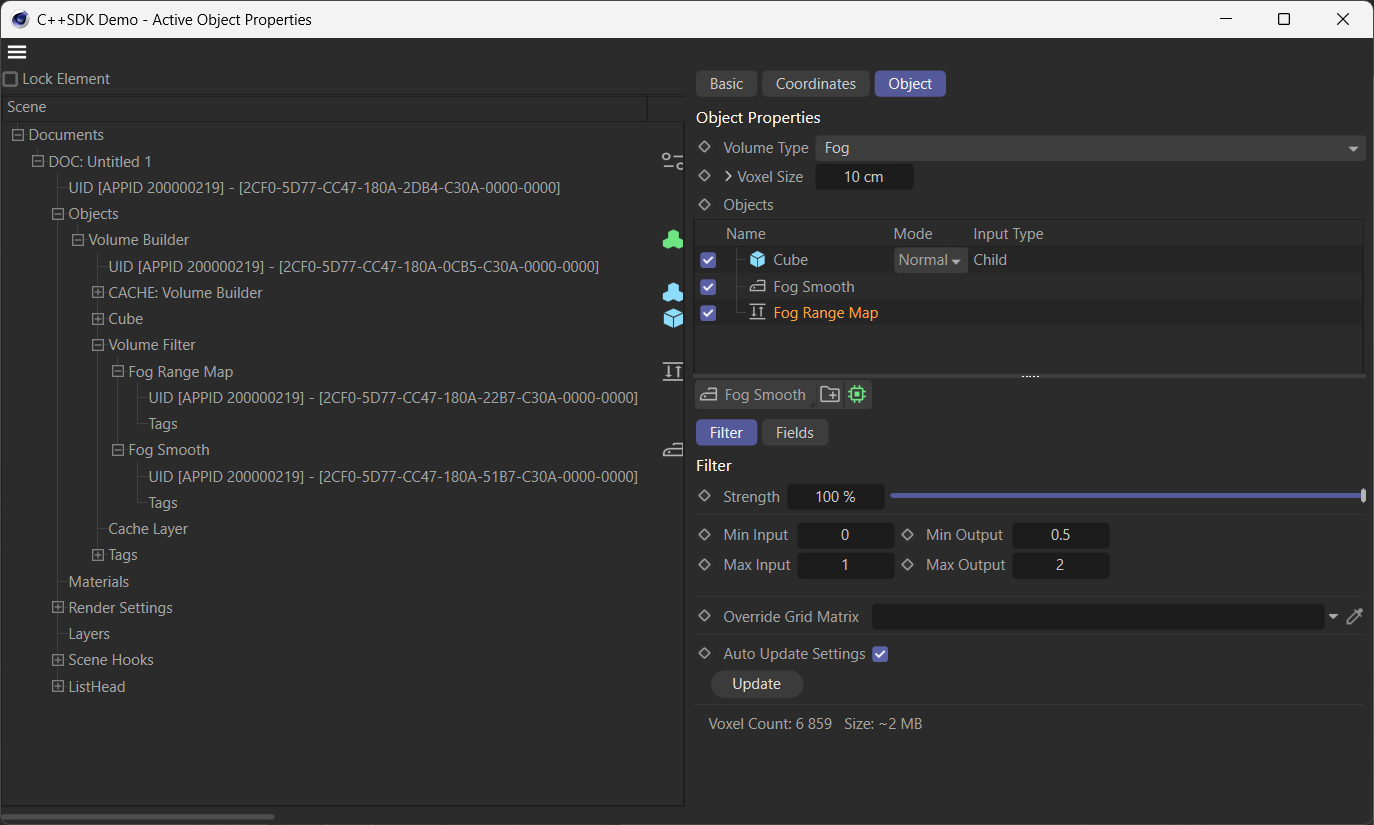Dissipating fog volume
-
Hello,
I'd like to achieve a dissipating fog volume over time. I have a volume builder object parenting a simple sphere. I have tried applying the 'Display' Tag and setting the 'Visibility' to 0% on both the volume builder and the source sphere, but neither seems to make the fog volume disappear. The only way I could achieve the effect was to use the Fog Range Map Filter on the volume builder object and set the 'Min Output' and 'Max Output' to 0.0.Now with the python script, I don't know how I can access this range map filter object programmatically. I get the volume builder object through the doc.SearchObject().
Any tips on how to obtain the filter object would be very helpful.
And also if there's a better way to dissipate the fog, I would appreciate to know!
Thanks in advance!!! -
Hey @ops,
Thank you for reaching out to us. Please excuse the delayed reply. You must use the c4d.modules.volume.VolumeBuilder interface for what you want to do, specifically its
GetInputObjectmethod. You have to understand that a volume builder is not a singular object, but a virtual tree of objects, and most parameters are located on one of these child objects. Cinema 4D then only displays the parameters of the child objects inline in the GUI (i.e., description) of the Volume Builder object.
Fig.I: The internal makeup of a Volume Builder object. The virtual hierarchy in form of Volume Filter is inaccessible both via the Object Manager and things likeGeListNode.GetChildren(). Instead we must use the dedicate UI and API interface to access them.Cheers,
FerdinandCode
"""Sets the new min and max values of a Volume Builder fog range object. Must be run as a Script Manager script with a Volume Builder object selected. """ import c4d doc: c4d.documents.BaseDocument # The currently active document. op: c4d.BaseObject | None # The primary selected object in `doc`. Can be `None`. #: The volume builder fog range object type. We currently do not expose a symbol for this. c4d.Ofograngemap = 1039862 def main() -> None: """Called by Cinema 4D when the script is being executed. """ if not isinstance(op, c4d.modules.volume.VolumeBuilder): raise ValueError("The selected object is not a Volume Builder.") # Iterate over the objects in the Volume Builder 'Objects' parameter list. for i in range(op.GetInputObjectCount()): node: c4d.BaseList2D | None = op.GetInputObject(i) # Can happen for folders and on failure, there is no good way to distinguish between the two. if node is None: continue # This is a fog range object, we could do here further checks to ensure it is the correct one. if node.GetType() == c4d.Ofograngemap: print(f"{node[c4d.ID_VOLUMEFILTER_SDF_REMAP_NEW_MIN] = }") print(f"{node[c4d.ID_VOLUMEFILTER_SDF_REMAP_NEW_MAX] = }") # Set new values. node[c4d.ID_VOLUMEFILTER_SDF_REMAP_NEW_MIN] = 0.5 node[c4d.ID_VOLUMEFILTER_SDF_REMAP_NEW_MAX] = 2.0 # Push an update event to Cinema 4D to refresh the user interface. c4d.EventAdd() if __name__ == '__main__': main()